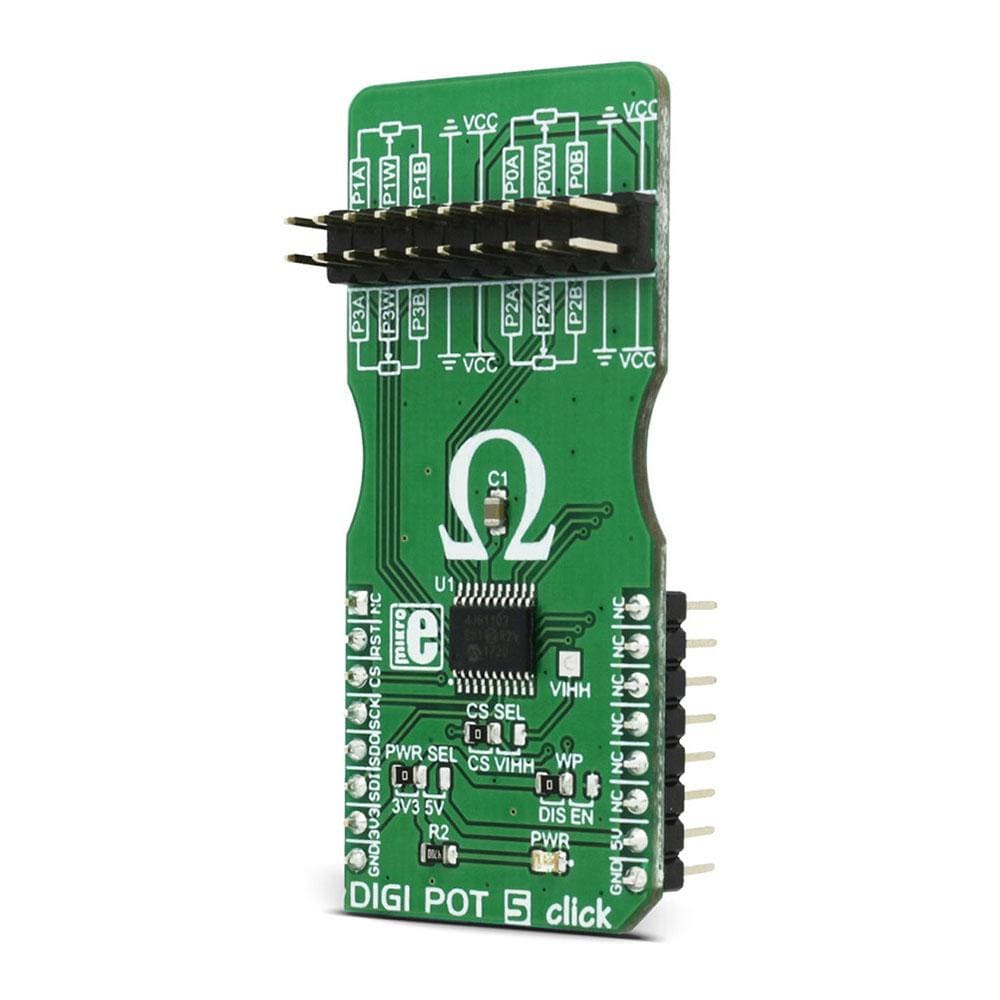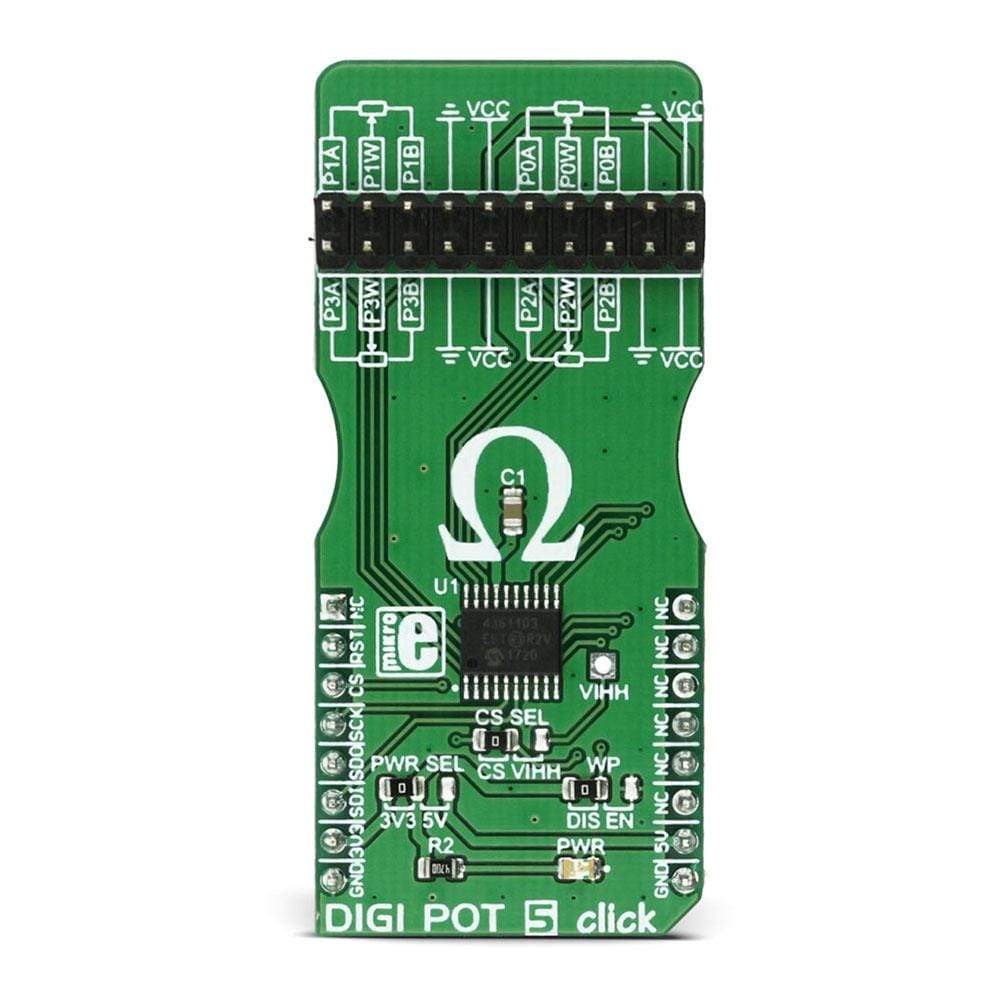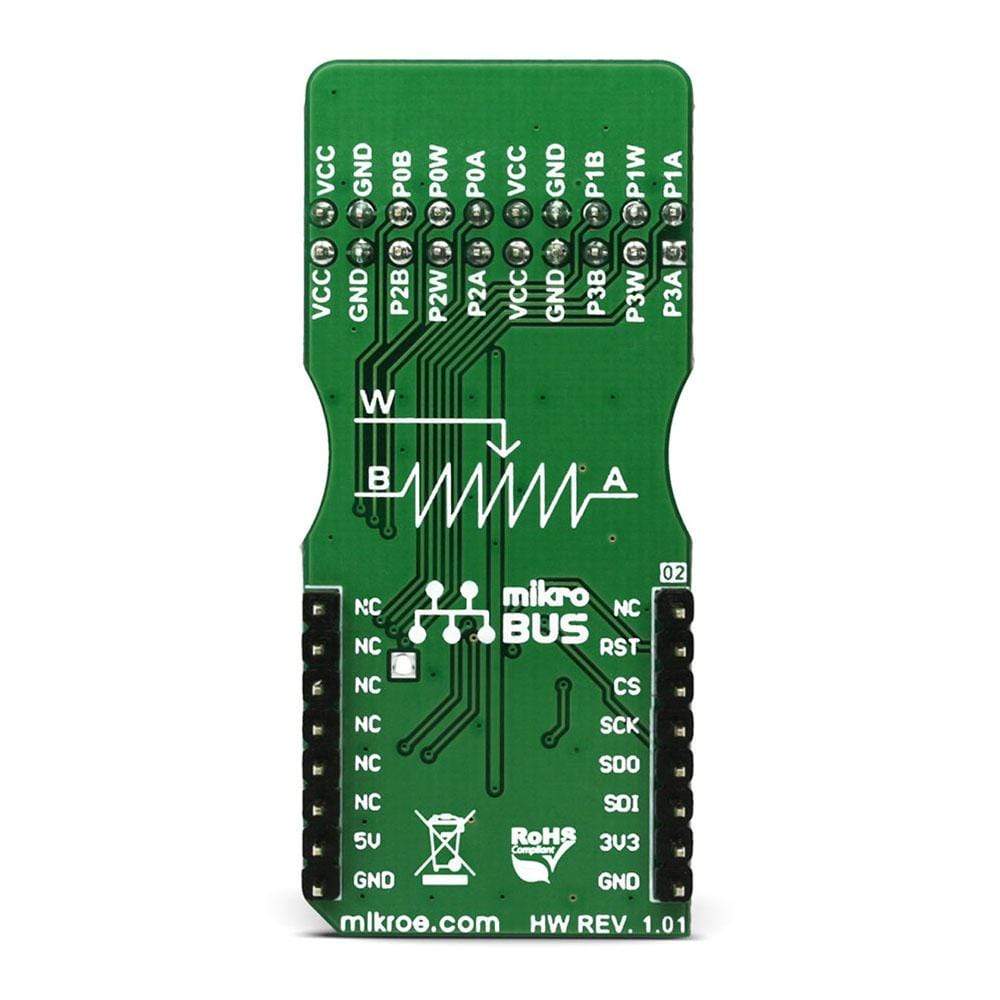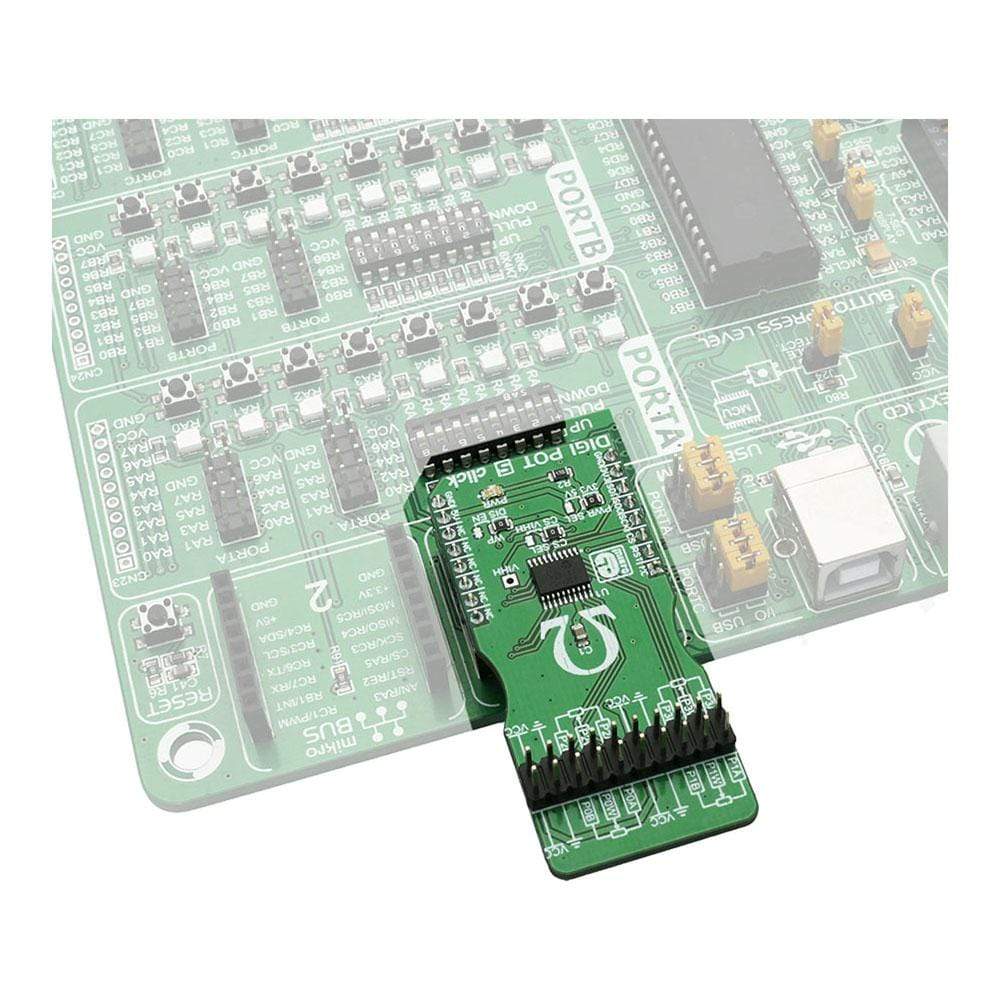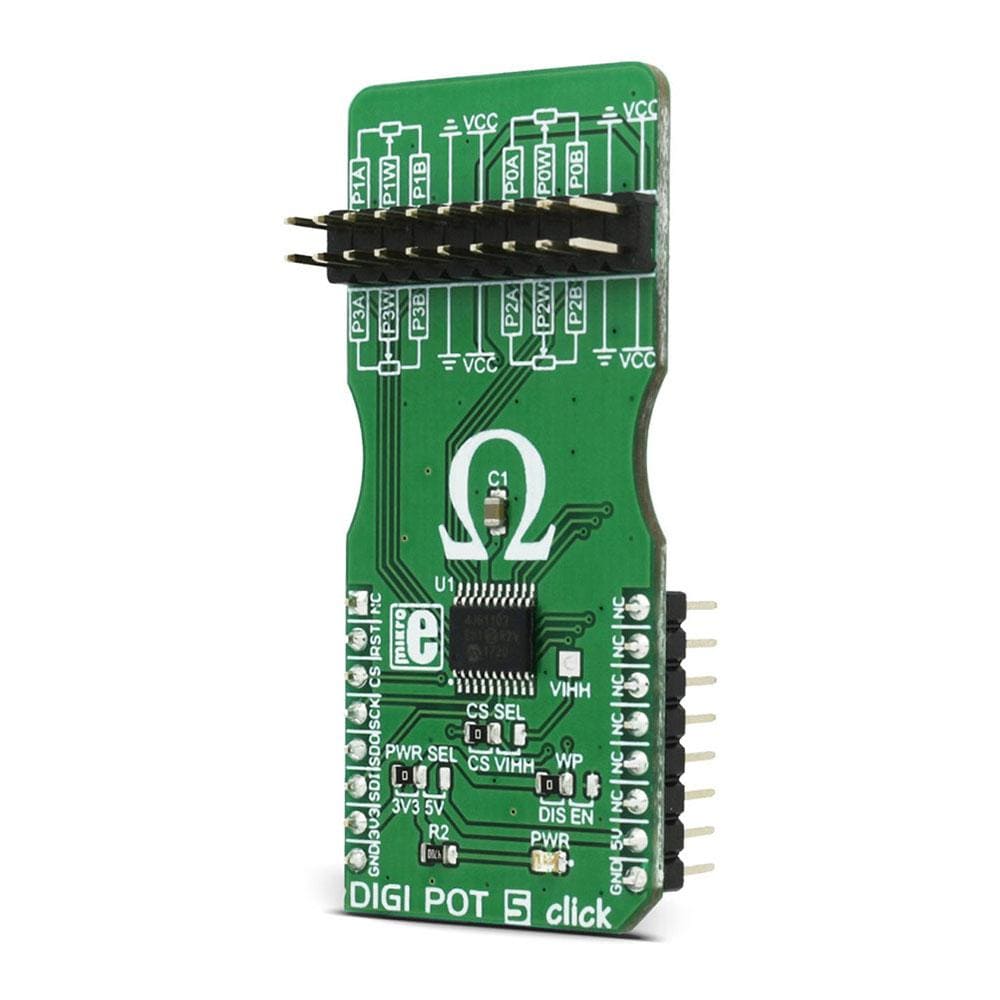
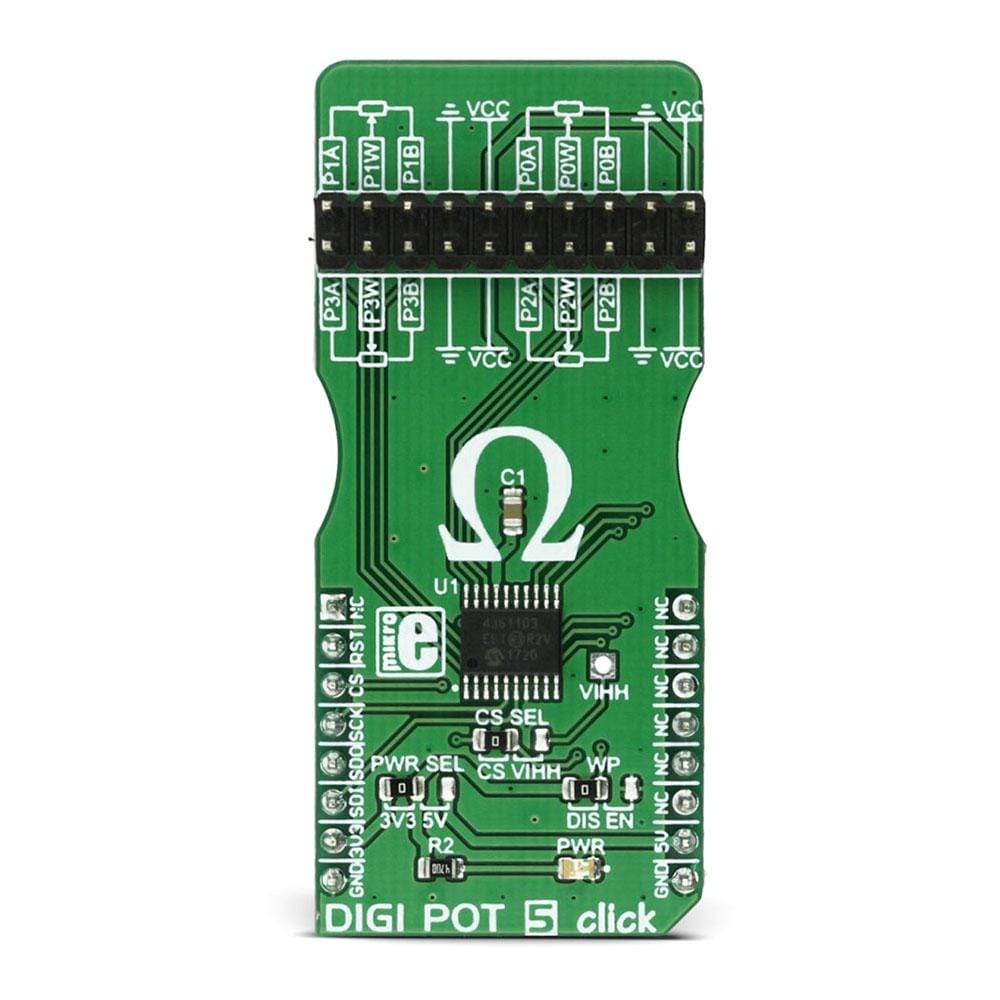
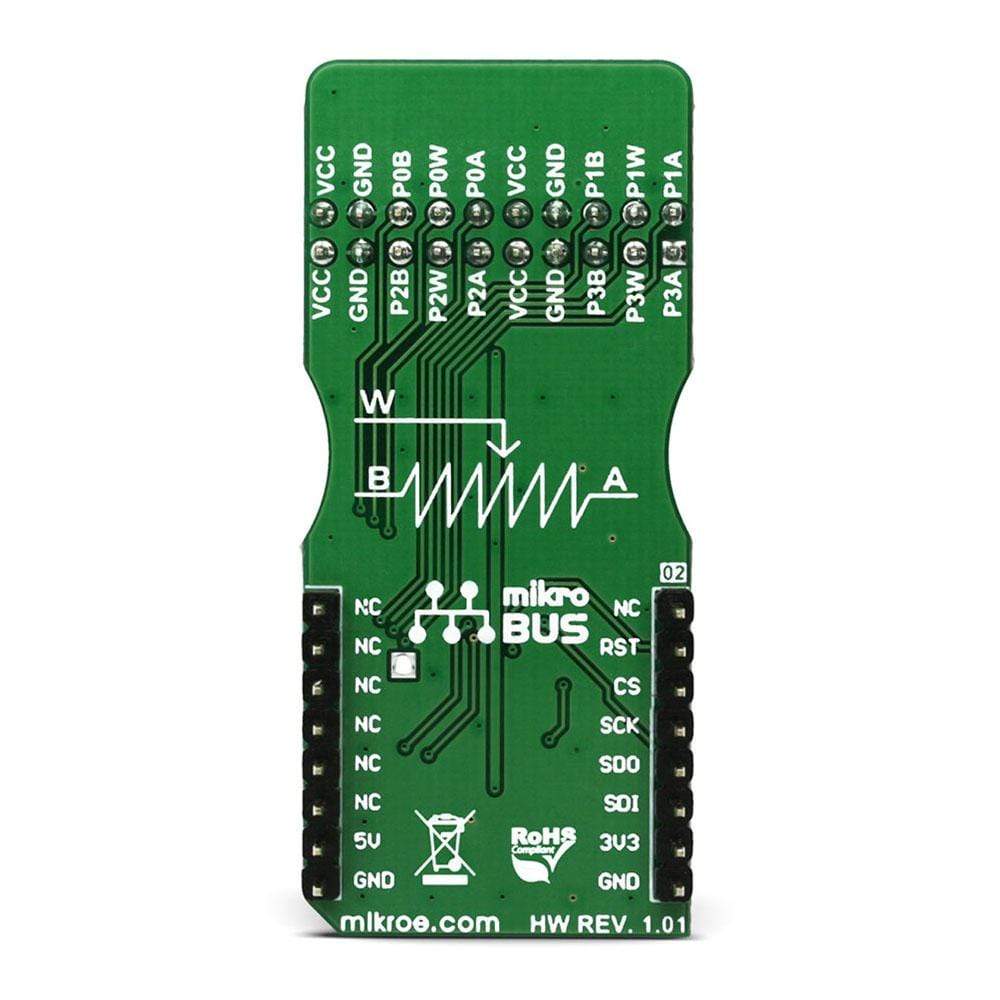
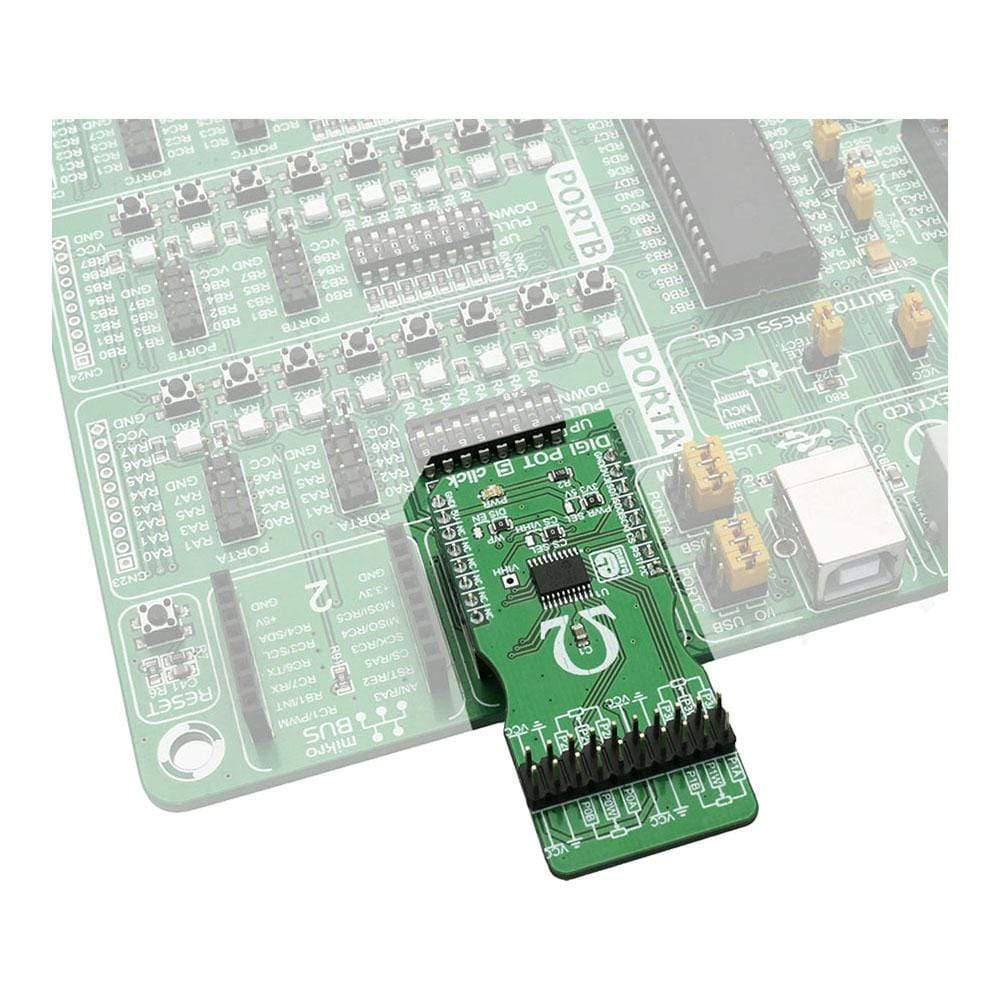
Overview
The DIGI POT 5 Click Board™ is a digitally controlled quad potentiometer, with a resistance of 10Kohm. It has an 8-bit wiper step resolution, which allows the wiper to take 257 different discrete positions (across 256 internal resistors). The digital wiper position can be controlled via the SPI interface.
The DIGI POT 5 Click Board™ features a durable EEPROM non-volatile (NV) memory for storing the wiper position. The content of the wiper register memory located in the NV memory is copied to the actual wiper registers after the power-on or reset state, so the device acts similar to its mechanical counterpart, recalling its last used wiper position after being powered on. The device also features the WiperLock technology, which effectively locks the wiper position in place.
Downloads
Le DIGI POT 5 Click Board™ est un potentiomètre quadruple à commande numérique, avec une résistance de 10Kohm. Il possède une résolution de pas de curseur de 8 bits, ce qui permet au curseur de prendre 257 positions discrètes différentes (sur 256 résistances internes). La position du curseur numérique peut être contrôlée via l'interface SPI.
Le DIGI POT 5 Click Board™ est doté d'une mémoire EEPROM non volatile (NV) durable pour stocker la position de l'essuie-glace. Le contenu de la mémoire du registre d'essuie-glace situé dans la mémoire NV est copié dans les registres d'essuie-glace réels après la mise sous tension ou la réinitialisation, de sorte que l'appareil agit de manière similaire à son homologue mécanique, rappelant sa dernière position d'essuie-glace utilisée après la mise sous tension. L'appareil est également doté de la technologie WiperLock, qui verrouille efficacement la position de l'essuie-glace en place.
| General Information | |
|---|---|
Part Number (SKU) |
MIKROE-2863
|
Manufacturer |
|
| Physical and Mechanical | |
Weight |
0.021 kg
|
| Other | |
Country of Origin |
|
HS Code Customs Tariff code
|
|
EAN |
8606018712144
|
Warranty |
|
Frequently Asked Questions
Have a Question?
Be the first to ask a question about this.

